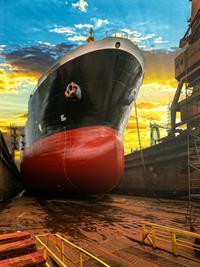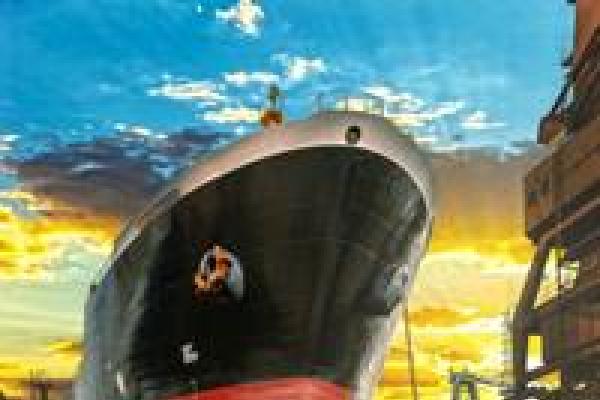
Heloise Campbell
Published: July 05, 2017
Image


Vessels routinely trade around the world calling at a multitude of different ports whether for cargo work or for other operations such as bunkering. As is to be expected ports do not have uniform characteristics and as a result may have differing requirements that vessels may have to comply with before being allowed entry or to berth – for example particular lengths or numbers of mooring lines. If so questions will arise as to whether owners or charterers bear the burden of any additional equipment or, in extreme cases, modifications to the vessel – for example to be allowed to sail through the newly expanded Panama Canal.
This article discusses the various considerations that apply to allocate risk as between owners and charterers in these circumstances.
Typical Charterparty Clauses
The standard charter obligations relevant to this question are the maintenance and suitability clauses, examples of which include:
Clause 1(c) Shelltime 4 - “At the date of delivery of the vessel under this charter and throughout the charter period…. she shall be tight, staunch, strong, in good order and condition, and in every way fit for the service, with her machinery, boilers, hull and other equipment (including but not limited to hull stress calculator, radar, computers and computer systems) in a good and efficient state.”
Clause 1 NYPE 1946 – “That the Owners shall provide and pay for all provisions, wages and consular shipping and discharging fees of the Crew; shall pay for the insurance of the vessel, also for all the cabin, deck, engine-room and other necessary stores, including boiler water and maintain her class and keep the vessel in a thoroughly efficient state in hull, machinery and equipment for and during the service.”
Clause 1(f) Shelltime 4 – “she shall comply with the regulations in force so as to enable her to pass through the Suez and Panama Canals by day and night without delay.”
Legal Requirements for a Vessel
Whether the risk of necessary vessel modifications to comply with regulation changes is an owners’ or charterers’ risk was considered in the well-known case of Elli and Frixos [see 'Due Diligence - Obligation to Maintain III' and 'Due Diligence - Obligation to Maintain II'].
This case focused on new MARPOL regulations concerning the carriage of fuel oil which came into effect in April 2005 and at which time the vessels did not comply and could not lawfully carry fuel oil cargoes. The issue between owners and charterers was who should bear the risk of a change in international regulations. The Court of Appeal’s answer to this question was “owners” on the basis of an express promise by the owners to comply with all legal requirements, including MARPOL. The Court of Appeal also confirmed that the cost of such modifications was not a relevant factor to be taken into consideration.
Similar considerations as to whether modifications are necessary to ensure a vessel can legally trade would likely be taken into account in the event of a dispute as to the obligation to make amendments to a vessel’s ballast water management system or to comply with other aspects of MARPOL, for example if modifications are needed to ensure a vessel can burn low sulphur fuel requirements to comply with ECA requirements. However, this will depend on the particular wording of any charter and the current specification of the vessel.
Port Regulations or Requirements Requiring Specific Equipment
The considerations are slightly different when the vessel is legally fit to carry the required cargo in the agreed trading area but difficulties are encountered as a result of a port requirement. One question which frequently arises is who bears the burden of providing additional or alternative mooring ropes when the ones on board do not satisfy the requirements of the port, and where there are delays whether hire is payable.
When considering this issue, the owners’ promises that a vessel is “in every way fit for the service” or “in a thoroughly efficient state in hull, machinery and equipment” will often be relied on in conjunction with the agreed trading area although some charters also contain bespoke clauses requiring a vessel to be fitted such that it can comply with port requirements. Ensuring a vessel can comply with port requirements is relatively straightforward where there is a restricted trade for the vessel and the ports are known, but where worldwide trading is involved disputes can arise.
London Arbitration 19/01 considered who had the cost burden for supplying additional mooring lines required for a particular port in Northern Chile and, has previously been discussed in 'The importance of vessels being fit for the voyage'.
The vessel had on board 5 mooring lines of 197 meters in length, in accordance with the vessel design and classification requirements. The port required 14 mooring lines of 220 metres. Owners argued the port was unusual in its requirements for mooring ropes and that they were entitled to an indemnity for the cost of complying with charterers’ employment orders. The tribunal reached the decision that the provision of mooring ropes was within owners’ sphere of responsibility and there was nothing unusual in that particular port’s requirement. This was on the basis that the classification requirements were the minimum requirements for trading and took no account of the practical needs of certain ports where conditions required additional securing, and that owners of commercial vessels used for worldwide trading should anticipate such requirements.
In The Derby [1984] 1 Lloyd’s Rep. 635 and [1985] 2 Lloyd’s Rep. 325 (C.A.), a case which related to a crew being ITF compliant, it was acknowledged that under a time charter a ship can often be traded to a wide range of ports and owners are not required to have obtained every certificate or permission for every eventuality. Whether a vessel is fit for service will depend on what documents would customarily be obtained by similar ships engaged on similar trades and whether there is a reasonably foreseeable risk of delay if a particular document has not been obtained.
Therefore, where a vessel only has the minimum amount of equipment available, or perhaps where the vessel’s set up is unusual for that particular type of vessel, and the port requirement is not excessive or exceptional, owners may be in breach of standard charter requirements to have a vessel in every way fit for service if they cannot comply.
However, a different conclusion may be reached if the requirements of the port were particularly unusual, would not have been reasonably anticipated for that charter service, or had not been clearly communicated in advance for the vessel’s arrival. In these circumstances, it could be argued that owners could not have anticipated requiring the necessary equipment to comply.
Otherwise, it is open to parties to include specific wording to the effect that a vessel will have the necessary equipment on board to comply with port requirements. Depending on the trading area, this may be an onerous requirement and one which owners may not agree to without qualification. If there is a specific obligation requiring an owner to have necessary equipment to comply with port requirements, it could be argued that this must be qualified by “reasonable” as otherwise the vessel could be in breach no matter how absurd the requirement from an operational perspective.
Modifications for the Panama Canal
The Panama Canal has recently been expanded with the result that wider vessels are now able to transit. This has opened up a more efficient trading route and many operators are understandably keen to utilise this to increase the profitability of their trades. However, there are various requirements for a vessel to be granted permission ['Panama Canal Mooring Line Requirements'] and a question which has arisen is who bears the burden for ensuring the vessel complies with these requirements.
Unlike in the Elli and Frixos, a vessel can still lawfully trade even if she cannot transit the Panama Canal as a result of not being fitted such that she complies with the regulations; it is not compulsory for a vessel to use the Panama Canal, even if that is an available route. On the basis of standard charter wording, such as clauses 1 of Shelltime 4 or NYPE 1946, it is arguable that a vessel would be fit for the service as she would still be able to sail the routes envisaged at the time the charter was fixed and would be able to carry the permitted cargoes.
Accordingly, there is a good argument that, subject to specific charter provisions, owners are not obliged to have the vessel modified to comply with new canal requirements applying post fixture so that the vessel can transit the canal, and would not be in breach of their obligations if modifications are not made. This is on the basis that any modifications necessary for the vessel to comply with the Panama Canal regulations would be for the commercial benefit of charterers to enable advantage to be taken of this shorter trading route, thus make their trading more profitable. The burden to arrange and pay for these modifications would, therefore, not rest with owners. This is dependent on any other clauses specifically dealing with Panama Canal transits which may specifically address the obligations of the parties. In the absence of such clauses, the parties may wish to reach an agreement for the modifications and amongst other factors this is likely to depend on when the fixture was entered in to and on the length of term remaining on the C/P as this will impact on the respective benefits to the parties of any modifications being made.
Owners and charterers will already be familiar with charters containing express clauses requiring a vessel to be suitably fitted and able to transit the Suez Canal. Therefore, for certainty on this issue, parties may wish to include an express clause, such as clause 1(f) of Shelltime 4, which addresses a vessel’s ability to trade using the Panama Canal. However, it is arguable that this obligation only applies at the date of delivery and would not oblige owners to make any modifications should this be necessary to comply with future regulations.
Comment
It is clear that there is likely to be scope for disagreement if a vessel cannot comply with specific port requirements and/or if new regulations are introduced during the period of a charterparty which would necessitate changes to the vessel so as not to limit the charterers’ contractual ability to trade the vessel. Parties may wish to consider this when entering into fixtures and include clauses which specifically deal with this situation. For example, it may be possible to expressly state that trading of the vessel is restricted to the suitability of the vessel as constructed and equipped and to include the necessary details of the vessel and her equipment in an appendix. Alternatively, charterers may be able to negotiate a provision placing the burden on owners of complying with regulations or requirements or otherwise sharing the cost depending on the type of regulation or requirement. This is likely of course to depend on the length of the envisaged fixture, the agreed cargoes and trading areas and the respective bargaining position of the parties. If the charter is silent on these issues any disputes are likely to be resolved on the basis of the principles discussed in this article.


